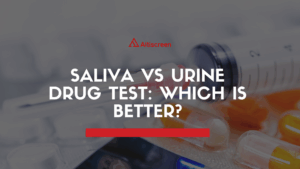Do Muscle Relaxers Show Up on a Drug Test? Everything You Need to Know
Many people prescribed muscle relaxers for pain, spasms, or injuries wonder whether these medications could show up on a drug test. It’s a fair concern — a failed screening can have serious professional or legal consequences. The truth is that most standard drug tests don’t look for muscle relaxers, since they aren’t typical drugs of abuse. But the reality is a bit more complex. Detection depends on several factors — the specific medication, the type of test used, and whether that test is designed to find it.
In this expert guide, we’ll break down how drug tests work, which muscle relaxers might appear, how long they stay in your system, and what to expect if you’re taking one before a screening.
Quick Answer: Do Muscle Relaxers Show Up on a Drug Test?
In most cases, muscle relaxers do not show up on a standard drug test. Routine 5- or 10-panel screenings focus on substances like THC, cocaine, opioids, amphetamines, and benzodiazepines — not on prescription muscle relaxants.
However, some exceptions exist.
- Carisoprodol (Soma) can appear as its metabolite meprobamate in extended panels.
- Diazepam (Valium) will always be detected because it’s a benzodiazepine.
- Cyclobenzaprine (Flexeril) can occasionally cause a false positive for tricyclic antidepressants (TCAs).
Otherwise, drugs like baclofen, tizanidine, and methocarbamol typically remain undetected unless a lab specifically tests for them.
So, unless your test panel is customized or expanded to include prescription sedatives, muscle relaxers won’t appear on your drug test.
What Are Muscle Relaxers?
Muscle relaxers are prescription medications designed to relieve muscle spasms, reduce tension, and ease pain caused by acute injuries or chronic conditions. They’re often prescribed for back pain, muscle strains, spinal cord issues, or neurological disorders like multiple sclerosis that involve muscle stiffness or spasticity.
These drugs work in two main ways — some act on the central nervous system to calm overactive muscles, while others act directly on the muscle fibers themselves. Among the most common are cyclobenzaprine (Flexeril), carisoprodol (Soma), methocarbamol (Robaxin), tizanidine (Zanaflex), baclofen (Lioresal), and diazepam (Valium). A few of them, such as carisoprodol and diazepam, are classified as controlled substances due to their potential for dependence, while others, like cyclobenzaprine, are not.
It’s also worth noting that there are no true over-the-counter muscle relaxers in most countries — they must be prescribed by a healthcare professional. Because these medications are legitimate treatments rather than illicit drugs, they’re not typically included in standard drug testing panels. Still, some muscle relaxers can cause drowsiness or mild impairment, and misuse — such as taking higher doses or combining them with other substances — can happen. That’s why many people wonder: can these medications be detected, and could they lead to a failed drug test?
Drug Testing Basics: Standard vs. Extended Panels
Before looking at specific medications, it’s important to understand how drug tests actually work. Most standard drug tests — like the common 5-panel or 10-panel urine tests — are designed to detect drugs that are frequently misused or illegal. These include opioids, amphetamines, cocaine, THC (marijuana), and benzodiazepines. Because muscle relaxers are prescription drugs and not typically abused like illicit substances, they’re usually not part of routine testing panels.
Some testing facilities, however, use extended or specialized panels that can screen for a wider range of substances, including specific prescription medications. If a particular drug is suspected or relevant to safety concerns, an employer or testing agency can request it. In other words, a muscle relaxer will only appear on a drug test if the test is specifically designed to look for it.
The reason is simple: most muscle relaxants aren’t considered high-risk or addictive compared to narcotics or stimulants. Standard drug screens focus on substances that could impair performance or pose safety risks. Still, a few muscle relaxers — especially those with sedative or dependency potential — can be flagged in extended testing, which we’ll explore next.
Do Muscle Relaxers Show Up on Drug Tests?
In most situations, muscle relaxers do not appear on a standard drug test. When taken as prescribed, common muscle relaxants are rarely detected during routine employment or athletic screenings. For instance, cyclobenzaprine (Flexeril) is not part of standard drug panels and typically goes unnoticed. Baclofen, often prescribed for spasticity, is also excluded from standard screenings, while tizanidine and methocarbamol are seldom tested for unless there is a specific reason. Simply put, standard tests are not designed to look for these medications.
Still, there are exceptions — some muscle relaxers can be detected under particular circumstances or may even trigger false positives. Understanding these cases helps clarify when and why a test result might change.
Carisoprodol (Soma)
Carisoprodol, marketed as Soma, is one of the few muscle relaxers that may appear on a drug test. Classified as a controlled substance, it metabolizes into meprobamate, a tranquilizer compound recognized by certain drug tests. Although carisoprodol is not listed on standard panels, extended or comprehensive drug tests can detect its metabolite. In other words, someone taking Soma might test positive for meprobamate during an advanced screening, especially if prescription sedatives are included. Therefore, carisoprodol can be detected, but only if the test specifically targets it or related substances.
Cyclobenzaprine (Flexeril)
Cyclobenzaprine is chemically related to tricyclic antidepressants (TCAs). While not a drug of abuse and generally ignored by most panels, it can occasionally cause a false positive for TCAs in certain urine drug tests. Routine screenings usually exclude TCA panels unless they are medically or legally required, meaning Flexeril typically remains invisible. However, broader toxicology tests may misinterpret it as an antidepressant, requiring confirmatory analysis. Techniques such as gas chromatography–mass spectrometry (GC-MS) can easily differentiate cyclobenzaprine from antidepressants, ensuring the false positive is cleared.
Diazepam (Valium)
Diazepam (Valium) serves both as a benzodiazepine and a muscle relaxant. Because benzodiazepines are part of nearly all standard drug panels, diazepam will always show up during testing. If you are taking diazepam or another similar medication like clonazepam, expect a positive result under the benzodiazepine category. Valium’s long half-life means it can be detected in urine for up to a week or more after use. Therefore, when your prescribed muscle relaxer belongs to this family, it will not go unnoticed during screening.
Other Muscle Relaxants
Other widely used muscle relaxers — including methocarbamol (Robaxin), metaxalone (Skelaxin), chlorzoxazone, and baclofen — generally do not appear on standard tests. Unless a lab customizes its panel to include them, they will not yield positive results. Methocarbamol may rarely interfere with low-quality tests, leading to misreadings that resemble opioids or barbiturates, but such cases are uncommon. Baclofen and tizanidine are also highly unlikely to trigger any reaction in traditional panels.
As a result, most muscle relaxers remain undetected unless a laboratory deliberately adds them to its analysis. This usually happens in clinical, forensic, or rehabilitation settings rather than in routine workplace or sports testing.
So, do muscle relaxers show up on a drug test? For nearly all standard tests, the answer is no. Yet, when specific substances like carisoprodol or diazepam are involved, or when the test is expanded to detect prescription sedatives, these medications can appear. Ultimately, whether a muscle relaxer is detected depends entirely on the type of test and the particular drug being used.
Types of Drug Screening and Detection Windows
Whether a muscle relaxer shows up on a test depends largely on the type of drug screening used. Each method has its own detection window and level of precision.
Urine tests are the most common for workplace or medical screenings. They’re easy to perform and can detect drug use over the past few days. However, standard urine panels don’t include muscle relaxers, so these medications usually go unnoticed unless the test is expanded to target them.
Blood tests are more precise but have a much shorter window — typically within a few hours or a day after taking the medication. They’re used mainly in hospitals or accident investigations, not routine employment checks.
Saliva tests only detect very recent use, usually within the last 24 to 48 hours. A muscle relaxer would only appear if the test were done soon after ingestion and if the panel specifically included it.
Hair tests offer the longest detection period, up to 90 days, but they’re rarely used for prescription medications. Detecting a muscle relaxer in hair would require a customized test, which is uncommon.
In short, muscle relaxers don’t appear on most routine drug tests. Only targeted or extended screenings can detect them — and even then, detection depends on timing, dosage, and the specific substance being analyzed.
False Positives: Can Muscle Relaxers Be Mistaken for Other Drugs?
One common worry among people taking prescription medication is the risk of a false positive — when a drug test mistakenly flags a substance that isn’t actually there. While modern tests are far more accurate than they used to be, certain muscle relaxers can still confuse older or less specific screening panels.
A well-known example is cyclobenzaprine (Flexeril). Chemically, it’s very similar to tricyclic antidepressants (TCAs). Because of that similarity, some drug screens may misread cyclobenzaprine as a TCA, especially in extended or clinical test panels. This doesn’t happen often, but if your urine test includes a TCA screen, Flexeril could trigger a false positive for antidepressants. Fortunately, confirmatory testing — like gas chromatography–mass spectrometry (GC-MS) — can easily distinguish between the two and clarify the result.
Another, though less frequent, mix-up involves methocarbamol (Robaxin). In rare cases, older or lower-quality tests have mistakenly identified it as an opioid or barbiturate. Again, modern confirmatory testing quickly resolves such errors by identifying the exact molecule in your sample.
It’s also worth noting that over-the-counter painkillers like ibuprofen or acetaminophen are not true muscle relaxers and do not show up on drug screens. Unless an OTC product contains an unusual ingredient that mimics a controlled substance, it won’t affect your results.
In short, false positives from muscle relaxers are rare but possible. If you ever face one, simply inform the testing administrator about your prescription. The lab can perform a precise follow-up analysis to verify the real cause. Thanks to modern toxicology methods, these mix-ups are easily corrected — the science is on your side.
Why Would Muscle Relaxers Be Tested for At All?
Since most standard drug panels don’t include muscle relaxants, you might wonder why anyone would test for them in the first place. In reality, there are only a few specific situations where screening for these medications makes sense.
One common case involves safety-sensitive jobs. In industries like transportation, construction, or aviation, employers must ensure that workers aren’t taking anything that could impair focus or coordination. Even legally prescribed drugs can raise concerns if they cause drowsiness or slow reaction times. For this reason, an employer may ask you to disclose your prescriptions and might include certain muscle relaxers in a custom test panel — especially for roles that involve driving or operating heavy machinery.
Rehabilitation and treatment programs are another context. Clinics monitoring addiction recovery often run expanded panels that check for a wide range of substances, including prescription drugs with abuse potential. For instance, carisoprodol (Soma) is sometimes misused for its sedative effects, so it may be specifically targeted in these tests. Similarly, diazepam (Valium) and other benzodiazepines are routinely screened in recovery settings to prevent relapse.
Drug testing for legal supervision, such as probation or parole, can also be expanded. While these programs usually focus on illegal substances, they may include prescription medications if misuse is suspected or if a person’s conditions forbid the use of sedating drugs. In such cases, muscle relaxers might be added to the test panel to ensure compliance.
Finally, medical testing sometimes detects muscle relaxers unintentionally. In hospitals or emergency departments, broad toxicology screens help doctors identify the cause of unexplained symptoms. Likewise, pain management specialists may test patients’ urine to confirm that prescribed medications are being taken as directed — in this case, the goal is to verify presence, not absence.
In all these examples, muscle relaxers appear only when the test is designed to detect them. Standard panels don’t automatically screen for these drugs, but laboratories can easily add specific compounds like carisoprodol or cyclobenzaprine if there’s a reason to look for them.
Conclusion
So, do muscle relaxers show up on a drug test? In most cases, they don’t. Standard drug panels are designed to detect commonly abused substances like opioids, amphetamines, cocaine, THC, and benzodiazepines — not prescription muscle relaxants. Drugs such as cyclobenzaprine, baclofen, tizanidine, and methocarbamol typically go unnoticed unless the test is specifically configured to find them.
However, there are important exceptions. Carisoprodol (Soma) may appear as its metabolite meprobamate on extended panels, and diazepam (Valium) — also a muscle relaxant — will always test positive as a benzodiazepine. Meanwhile, cyclobenzaprine can occasionally cause false positives for tricyclic antidepressants, though confirmatory lab tests can easily resolve this confusion.
Ultimately, whether a muscle relaxer appears on a drug test depends on the medication, the testing method, and the purpose of the screening. Most workplace and sports panels will never detect these drugs, but expanded or clinical tests can. If you’re prescribed a muscle relaxer, the best approach is transparency — disclose your medication before the test and bring documentation if necessary. Doing so ensures any results are properly interpreted, protecting both your health and your professional standing.





